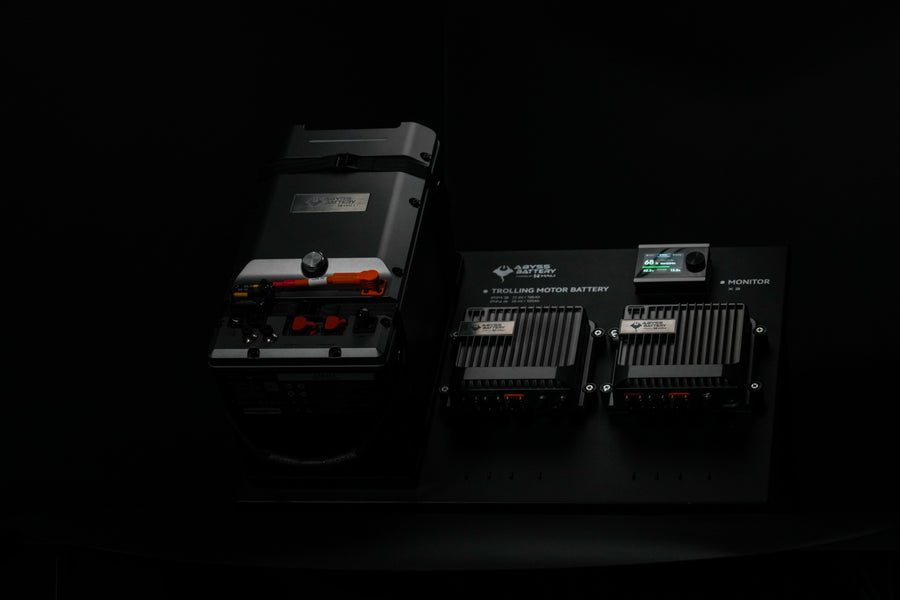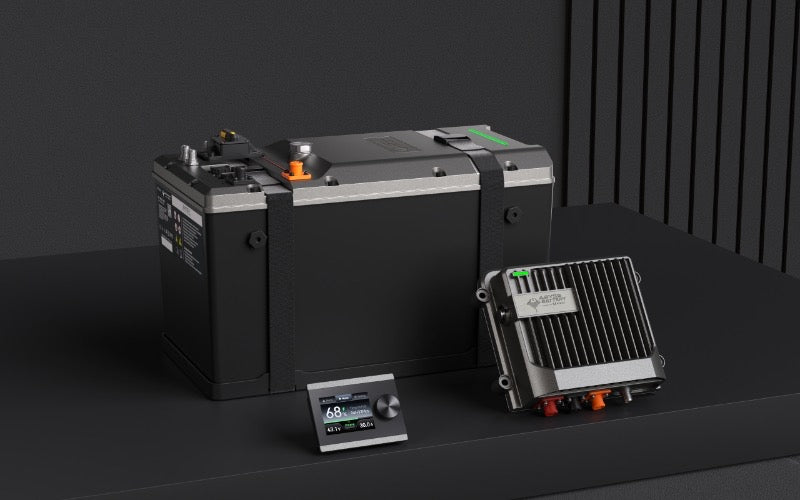Mistakes To Avoid When Charging Marine Lithium Batteries

Marine lithium batteries are resilient and long-lasting, but there are still some mistakes that boat owners make when charging them that you should avoid. Ensure your new lithium battery operates at peak capacity and reaches its full potential with our helpful guide on charging!
Using the Wrong Charger
One of the most common mistakes new owners of marine lithium batteries make when charging is utilizing the wrong charger. While it’s possible to charge an ionic lithium battery with a lead acid charger, it comes with a risk and is generally not recommended unless it’s the last option.
Obviously, a lithium battery charger is better suited to a lithium battery. If a lead-acid charger reaches a voltage level a lithium battery can’t handle, it could permanently damage the battery. It’s always recommended to use an onboard lithium battery charger for a lithium battery not only because it’s safer but because it’ll help charge the battery faster.
Pro Tip: Before purchasing a charger, read the manual to ensure it specifies it’s compatible with the lithium battery you plan to pair it with.
Using a Charger With the Wrong Voltage/Amps
Along with using a lead-acid charger with a lithium battery, another common mistake is using a charger with an incompatible amount of voltage or amps. It may seem obvious, but owners forget all the time to check a charger’s voltage before hooking it up to their battery.
When charging, ensure the amp hour (Ah) rating of the battery charger isn’t higher than the Ah rating of the lithium battery. If the charger’s Ah rating is higher than the battery, it could harm the battery severely.
Pro Tip: Need to charge multiple lithium marine batteries at once? Consider a multi-bank charger that can sufficiently charge numerous batteries at a time safely.
Not Sufficiently Discharging the Battery
A lithium battery has many charging cycles in its lifetime, and it’s healthier for the battery if it’s discharged and recharged sufficiently. Ideally, a lithium battery will discharge 50-80 percent of its capacity, or more for some units, before recharging.
When recharging, it’s always best to recharge the battery to its total capacity. Partially discharging about 10-15 percent of the battery’s capacity and recharging is terrible for its health. Don’t be afraid to use the battery—it’s better to put the juice to use often!
Not Charging the Lithium Battery Long Enough
As we mentioned, not charging the lithium battery to its ideal condition is a common mistake owners make. The charging time for lithium batteries has many variables—like the specific charger and system utilized.
There’s a simple way to determine how long you should charge your battery—the amps of the charger and battery. Divide the amps/hour of the charger by the amps of the battery unit—a 100-amp/hour charger will fully charge a 50-amp battery in approximately two hours.
Lithium-ion batteries have low internal resistance, so they can take all the electric current the charger delivers, thereby charging faster.
Inadequate Charging Conditions
Lithium batteries are much more durable and resistant to adverse conditions than their lead-acid counterparts, but it’s still wise not to routinely test that durability. Most lithium batteries and chargers should be fine if the temperature is above freezing and below 150 degrees Fahrenheit.
Still, it’s best to always charge a lithium battery inside a climate-controlled environment to ensure its safety. Sometimes, owners will hook up their charger outside on a hot day and forget about it—letting the hot sun bake it and damage the battery.
Benefits of Marine Lithium Batteries
Those are a few mistakes to avoid, but why should a boat owner consider a lithium battery in the first place? Well, there are many advantages that lithium batteries offer, but the most valuable and favored among owners are their light weight, longevity, and enhanced power storage.
We’ll discuss these benefits in more detail to understand why you should consider a lithium marine battery.
They’re Smaller & Lighter
Perhaps the most significant benefit of a lithium battery compared to the lead-acid alternatives is it’s much smaller and lighter. It always pays to be a little lighter on the water for speed and safety, and lithium batteries have a clear advantage in that department.
On average, a lithium battery can weigh about half of a standard lead-acid battery of the same voltage—sometimes even less. It may not seem like a lot of weight, but when with multiple batteries, you could be shedding serious pounds from your boat.
They Last Longer
Lithium batteries are smaller and lighter, and they’ll last much longer than their lead-acid competitors. At best, a lead-acid battery has about 1,000 charge cycles in its lifespan.
That means boat owners can expect to discharge and recharge their lead-acid battery about 1,000 times over its lifespan. A typical marine lithium battery will last at least 3,000 cycles, possibly up to 5,000.
By making the switch to a lithium battery, you’re more than doubling your battery’s longevity.
They Require Less Maintenance
On top of the lithium battery’s greater endurance and smaller size, they require much less maintenance and are far more durable than lead-acid units. Lead-acid batteries’ conditions and charging methods must be much more precise to avoid damage than a typical lithium battery.
Lithium batteries can withstand intense cold and heat much better than lead-acid batteries. A lithium battery can capably charge without possible damage in any temperature between 0-130 degrees Fahrenheit. If you try to charge a lead-acid battery at 0 or 100 degrees, you’ll run into many problems or severely damage the unit.
They Have a Better Long-Term Value
These benefits of marine lithium batteries offer much more significant long-term value than lead-acid batteries. Yes, a lithium battery typically has a steeper sticker price than a standard marine battery. Still, the choice is easy when you factor in longevity, durability, and lighter weight of a lithium unit.
A lead-acid battery may initially save a boat owner money, but a lithium battery can last multiple times longer than its lead-acid alternative. After a few years, when your lithium battery is still operating at peak capacity while lead-acid units have failed, you’ll recognize the value.





If a lead acid charger is bad for a Lithium Iron battery then what should I do with the charging system on my boat motor?? Should I just disconnect it?
Scott honey come back to bed sweetie I miss your fat ass you mutha fucka.
Jaron I’ll see you tomorrow night, I still have your panties.
First of all fuck you Alan Skea, I am the one true Allen.
Second. You can shut the fuck up to Scott, you ain’t shit nigga.
I am fucking awesome. You are not Alan Skea. Get out of my life. You have fleas and herpes.
Can I use my 100 amp solar pannel to top off my 100ah lithium battery, using my solar pannel controller?
Leave a comment